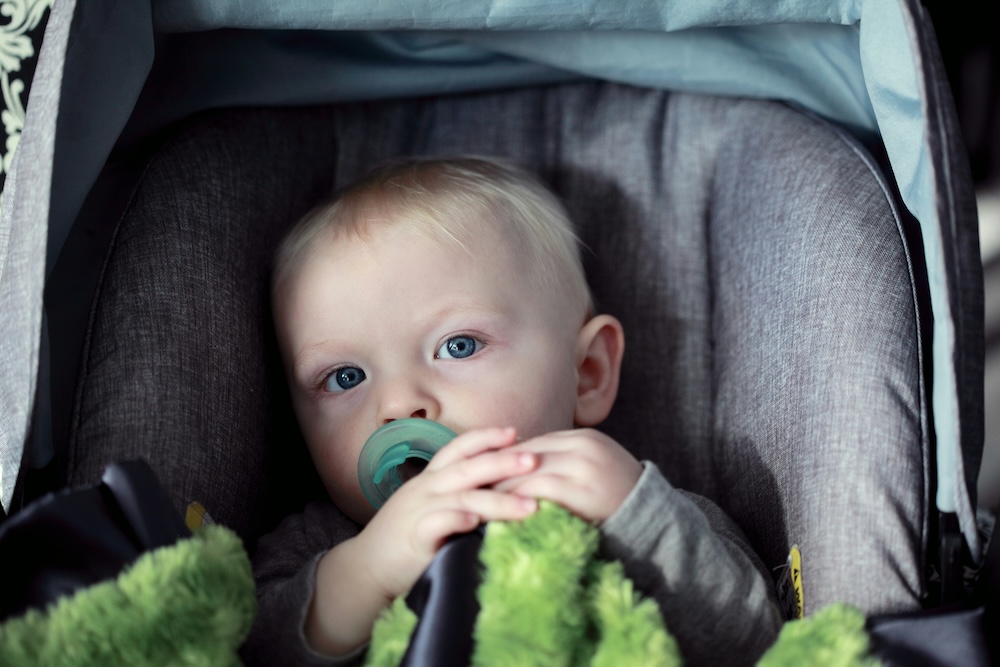It’s winter and keeping your child safe is important during the cold season. Dressing your child with thick puffy coats may keep your child warm, but it can be unsafe if worn in a car seat. Car crashes are a leading cause of death for children ages 1 to 12 years in the US, but car or booster seats can provide protection. It’s important to use the right car seat correctly whenever your child is in the car.
In order for car and booster seats to function properly, your child needs to remain tightly strapped, with the straps against the child’s chest. Snowsuits and puffy coats may loosen the way your child fits into the car or booster seat, making your child more susceptible to slipping out during an accident. They will be more likely to hit hard parts of the car, like the front seat, window, or door, which may cause significant injury. This is why it is extremely important that the car seat’s strap and belt stays close to the child’s body at all times. If your child is wearing a thick winter coat, you will end up tightening the straps to the size of the coat, not the size of your child. In case of an accident, this can cause the coat to compress and create space between your child and the belt. As a result, your child might slip out.
The following is a safe car seat product list for different age groups provided by the American Academy of Pediatrics (AAP). It is important to note weight restrictions:
- Infants/Toddlers: Rear-facing car seats used until at least one year of age and weight is 22 lb (10 kg).
- Toddlers/Preschoolers: Front-facing car seats used until weight is 40-65 lb (18-30 kg).
- School-aged children: Booster seats used when children are at least 40 lb (18 kg).
- Older children: Seat belts should be used when your child is at least 80 lb (36 kg) and 145 cm (4 feet and 9 inches) tall. All children younger than 13 years of age should ride in the back seat.
Always keep a copy of the car seat manufacturer’s instructions in your car and follow them carefully. Make sure the car seat is right for your child’s weight and height. It’s recommended to place the car seat in the middle of the back seat. After installation, the car seat should move no more than an inch in forward or side to side.
While protecting your child’s safety inside a car is crucial, keeping your child warm is also important. There are different ways you can keep your child warm without having them wear a thick winter coat while in their car seat. Below are some recommendations:
- Store the carrier portion of the car seat inside the house at room temperature when not in use.
- When ready to travel, make sure the car seat is ready before bringing your child out into the cold. You can bring your child out in a winter coat but remove the coat when placing them in the car seat. Hats, mittens, socks, and boots can stay on, as these do not interfere with car seat safety. It’s best to dress your child in thin, but insulated layers, so the child stays warm but the clothes do not impact the safety of the car seat.
- Warming up your vehicle with the car heating system before placing the child in the car seat will prevent your child from feeling cold. Placing a blanket over the child after they are strapped in the car seat may also be beneficial in keeping your child warm throughout the trip.
Regardless of the weather, parents should never leave their child alone in the car at any time. If you have any questions about your car seat and how to properly use it safely, contact our office.




